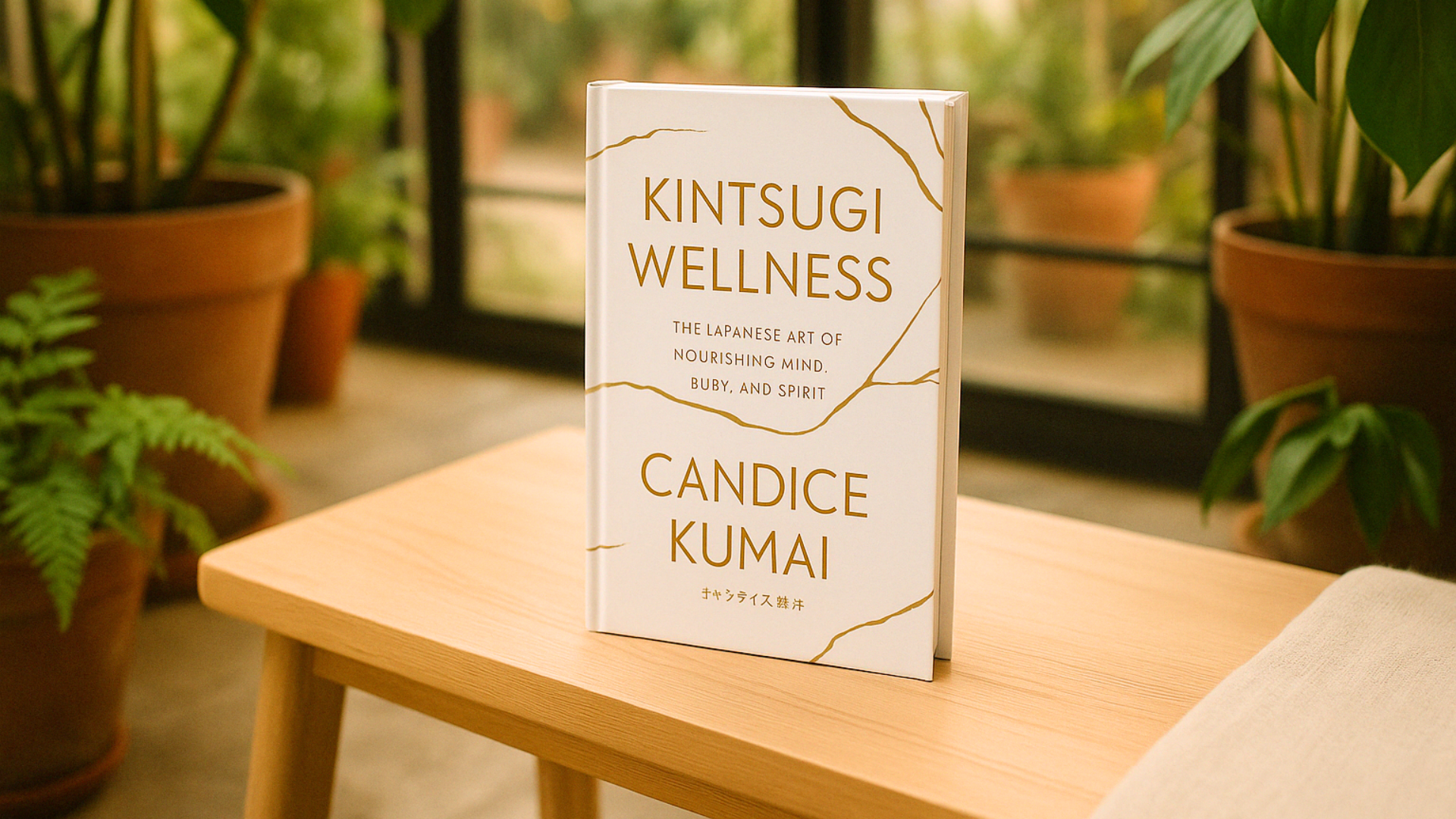What Kintsugi Wellness Teaches About Self-Care and Resilience

Book Review: Kintsugi Wellness by Candice Kumai
A quiet and wholehearted return to strength, through the beauty of imperfection and ancestral wisdom
In Kintsugi Wellness, Candice Kumai offers a deeply personal and culturally rooted approach to healing that goes far beyond green smoothies and self-care checklists. Drawing on the Japanese practice of kintsugi, the art of repairing broken pottery with gold, she reframes our cracks and wounds as opportunities for beauty, resilience, and deeper connection.
Part memoir, part lifestyle philosophy, and part recipe collection, the book invites readers to embrace imperfection, slow down, and honour the values passed down through generations. At its heart, this is a book about finding grace in the mess, purpose in the pause, and strength in what once felt broken.
What the book promises
Kintsugi Wellness promises a path to healing and strength through traditional Japanese wisdom. Rather than offering a rigid plan or fast transformation, Kumai introduces timeless principles like wabi-sabi (accepting imperfection), shikata ga nai (letting go), and ganbatte (doing your best), guiding readers to explore these ideas through small actions and mindset shifts.
The book’s promise is as much emotional as it is practical. It encourages the reader to view wellness not as an external achievement but as a return to values that nurture resilience, integrity, and self-respect.
What the book delivers
Kumai delivers a tender and grounded message through a structure that balances personal narrative with cultural reflection and lifestyle suggestions. Each chapter is built around one core Japanese value, paired with stories from her own upbringing and career. These are not polished success tales, but honest moments of loss, growth, and rediscovery.
In addition to essays, the book includes dozens of wholesome, Japanese-inspired recipes. While not the primary focus, these recipes reinforce the book’s message that nourishment begins with intention and care. They are written with clarity, often featuring simple ingredients, and are meant to be integrated slowly into the reader’s life.
The writing is infused with warmth and humility. Kumai never claims to have all the answers. Instead, she invites readers to learn alongside her, to honour their roots, and to explore what wholeness means on their own terms.
Style and structure
The book is organized thematically, with each chapter exploring a single principle. This structure makes it easy to read in small portions, to return to favourite sections, and to absorb the content at a comfortable pace. The style is fluid and personal, making the book feel like a letter from a thoughtful friend rather than a traditional guide.
Kumai’s voice is sincere and gentle. She moves easily between cultural commentary and personal story, and she writes with deep respect for the wisdom she is passing on. Her tone avoids hype or prescriptive language. Instead, she offers grounding reflections and small actions that readers can choose based on their own needs.
The layout, supported by clean visuals and soft design elements, adds to the feeling of calm and spaciousness. Readers are encouraged not just to read, but to pause, to reflect, and to notice what resonates.
Where the book shines
Kintsugi Wellness shines in its heartfelt integration of cultural heritage and emotional healing. Kumai’s stories of her Japanese mother and the values instilled through food, discipline, and care add layers of authenticity that are rare in wellness literature. Rather than borrowing trends, she is translating lived tradition into something relevant and healing for modern readers.
Her reflections on emotional strength are particularly resonant. Ideas like perseverance and acceptance are presented not as motivational slogans, but as quiet, steady companions during difficult times. The book reminds the reader that strength is not found in constant striving, but in staying grounded through hardship.
The recipes are another highlight. They are thoughtfully chosen to match the tone of each chapter and serve as a tactile way to engage with the material. The act of cooking becomes an extension of reflection and care, connecting the reader to both body and memory.
Light limitations
Some readers may look for more structured wellness plans or action-oriented strategies. This book is not designed to be a checklist or a linear transformation process. It is best suited to readers who are comfortable with a slower, more intuitive approach.
A few of the recipes may require specialty ingredients that are not widely accessible, particularly for those new to Japanese cooking. However, the majority are simple and adaptable, and the emphasis remains on intention rather than perfection.
The tone is consistent throughout, which brings cohesion, but can also feel repetitive at times. For those reading straight through, a bit more variation in rhythm or pacing might offer added contrast.
Final thoughts
Kintsugi Wellness is a beautiful and sincere reflection on what it means to care for yourself in a world that often demands perfection. Candice Kumai brings deep respect for her heritage and a genuine openness about her own journey. Her writing offers comfort and clarity for those navigating change, recovery, or quiet transformation.
This is not a book about fixing yourself. It is about remembering that your cracks are not evidence of failure. They are part of what makes you whole. Kumai gently reminds readers that healing often happens in the background, through the rituals, meals, and choices that reconnect us with who we truly are.
Highly recommended for women seeking grounded inspiration, cultural wisdom, and a healing relationship with imperfection.